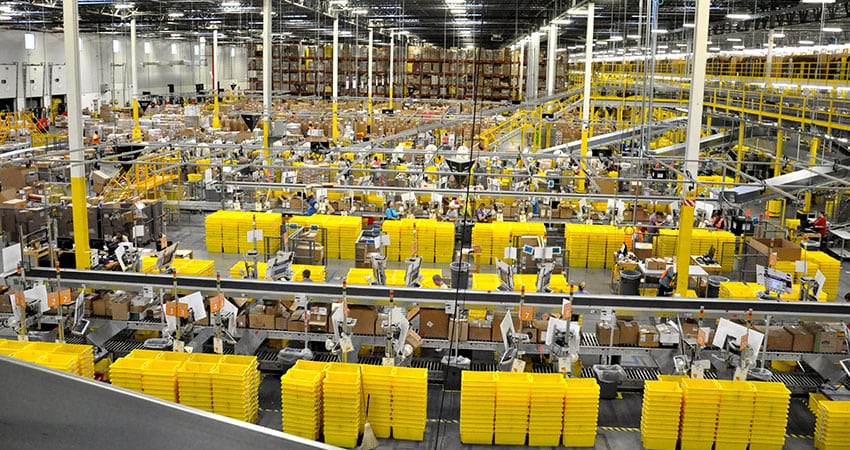In an effort to address overcapacity issues in its dozens of fulfillment centers, Amazon has instituted new charges that will penalize third-party sellers – who make up more than half of its sales – for having slow-moving inventory.
The company has instituted an “Inventory Performance Index” (IPI) drawing on several factors, setting the bar at a score of 350. As of July 1, merchants with a score below 350 may have their access to storage limited by Amazon and incur monthly overage fees. The score is updated weekly.
“Our goal is to encourage efficient inventory management that benefits you, customers and Amazon,” the company told sellers. “While we continue to invest in our fulfillment network to better serve your business, at times we experience physical constraints on inventory capacity during key shopping seasons. To help minimize these constraints, we want to continue to allow the most efficiently managed inventory to flow through the network, while limiting less efficiently managed inventory.”
If a seller’s IPI is less than 350 six weeks before the start of a quarter, they will be notified about potential storage limits. If it’s still below the threshold at the end of the quarter, limits will apply for the next quarter. Shippers will be barred from sending new shipments to Amazon until their inventory drops below the storage limit. They will also be charged a fee for excess inventory: $10.00 per cubic foot, based on the daily average volume of inventory that’s over the limit.
In another inventory-adjusting move, Amazon raised its monthly storage fees on April 1 by 5 cents, to 69 cents per cubic foot for standard size items from January-September, and to $2.40 per cubic foot in the busier October-December time period. Fees on oversized items are now 48 cents during off-peak months and $1.20 during peak. On Sept. 15, it will also raise its long-term storage fees and adjust them monthly instead of semi-annually.
Amazon’s fulfillment costs rose 43% in 2017 to $25.2 billion, compared to a 31% increase in sales. According to 2017 research from Jeffries, Amazon at that point had more than 100 million square feet of fulfillment space, which had been increasing 35% a year since 2007, adding ecommerce requires 3x the space of retail replenishment.
FBA Onsite and Seller Fulfilled Prime are two other ways Amazon has sought to get its arms around the growing network capacity and fulfillment volume issues.
MCM Musings: It’s amazing that even with its massive – and growing – fulfillment footprint Amazon is still running into capacity issues. The company intentionally kept fees low initially to draw in more 3P sellers, a strategy which apparently worked too well. In much the same way that UPS and FedEx started penalizing shippers in 2015 for clogging up their networks with too many air-filled boxes, Amazon is making these moves to enforce needed inventory discipline on its millions of sellers worldwide.

